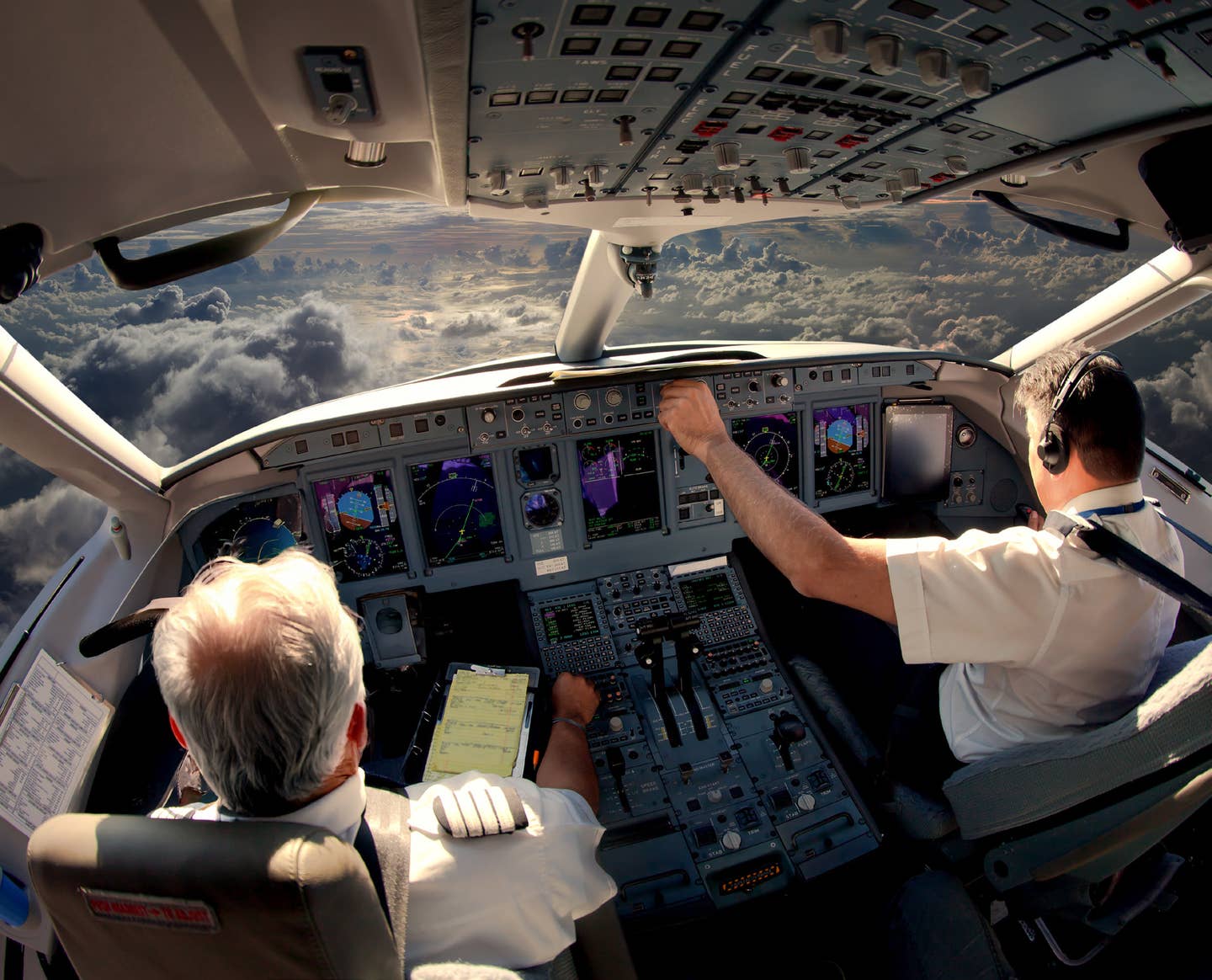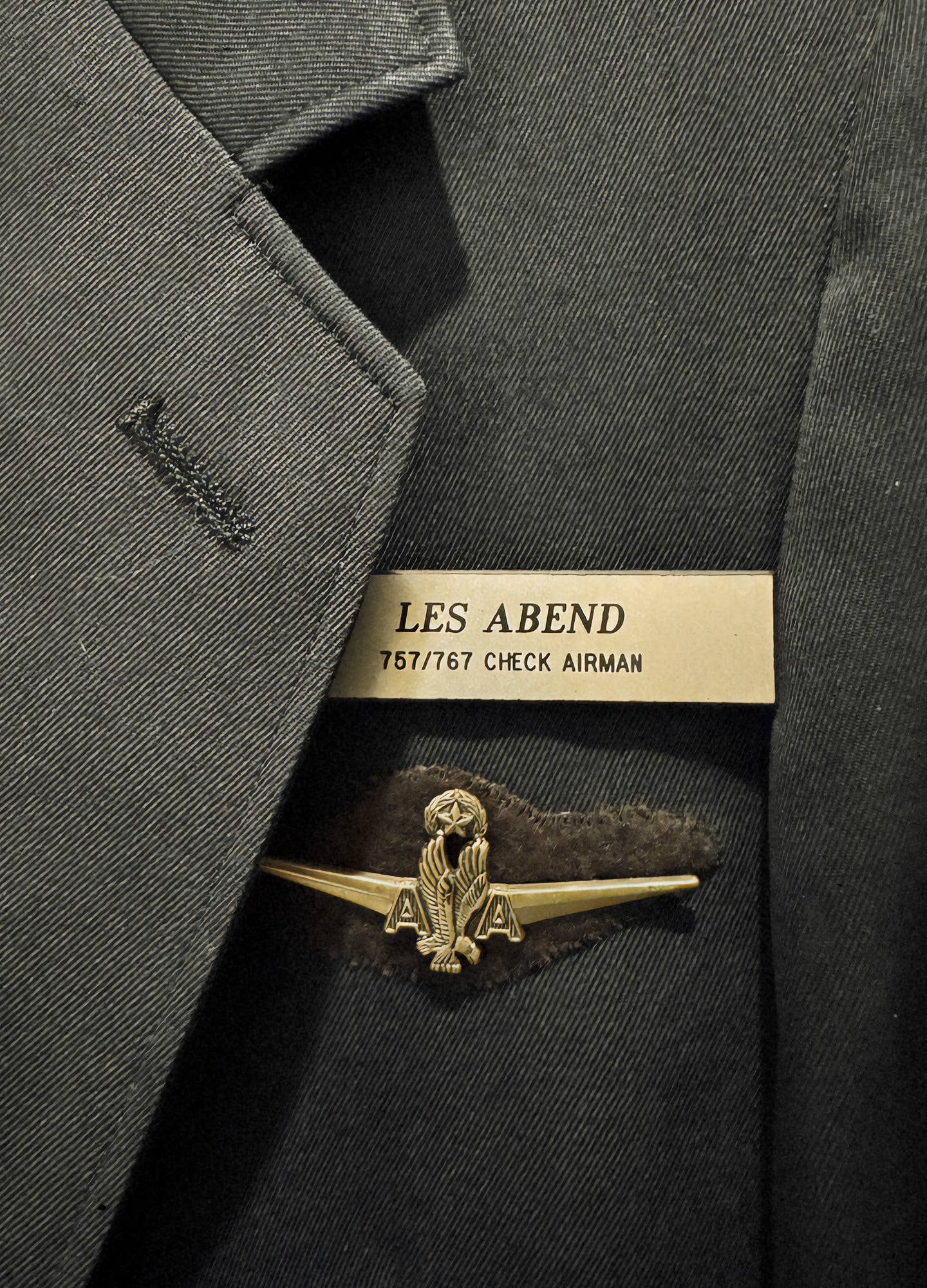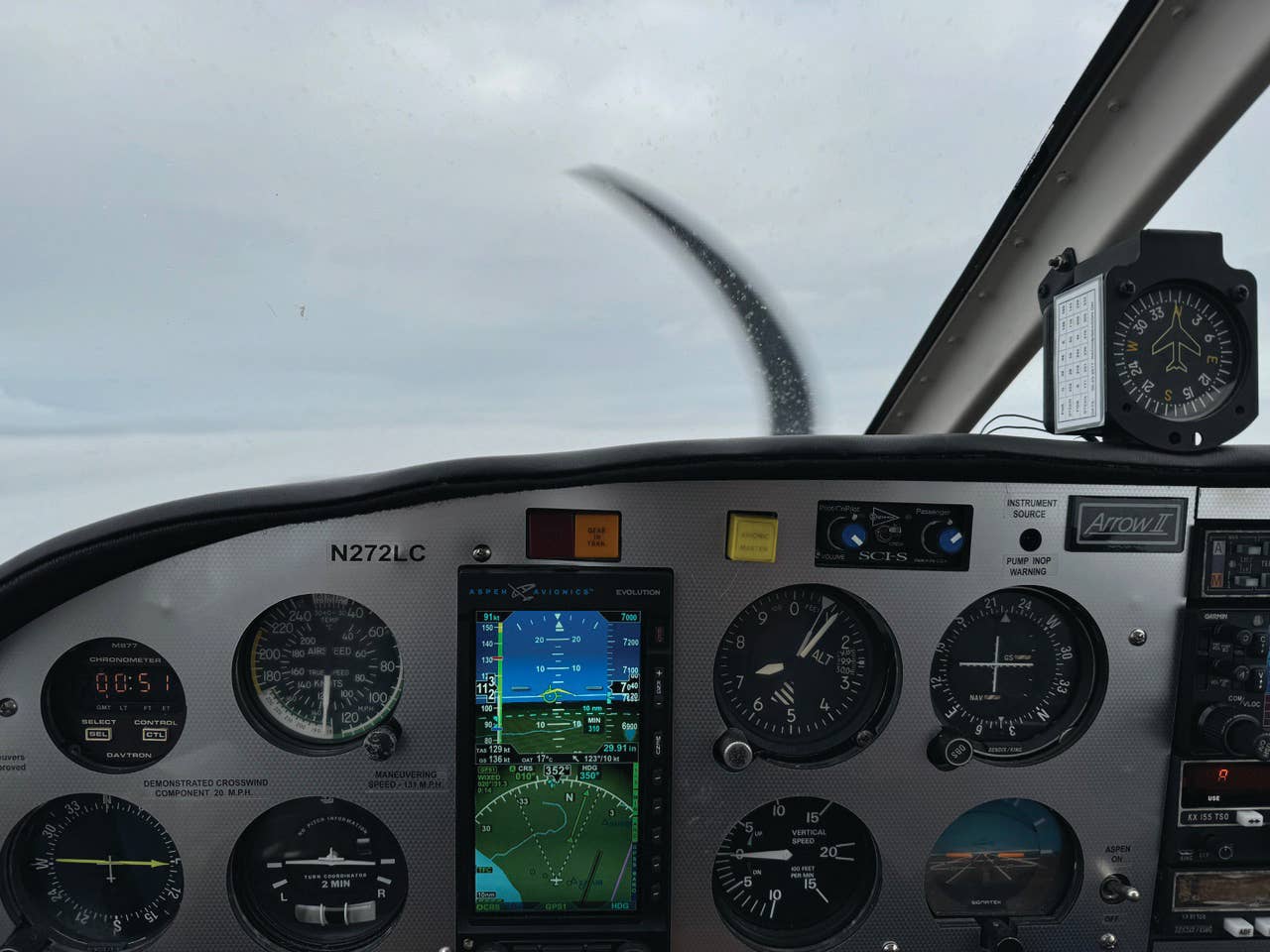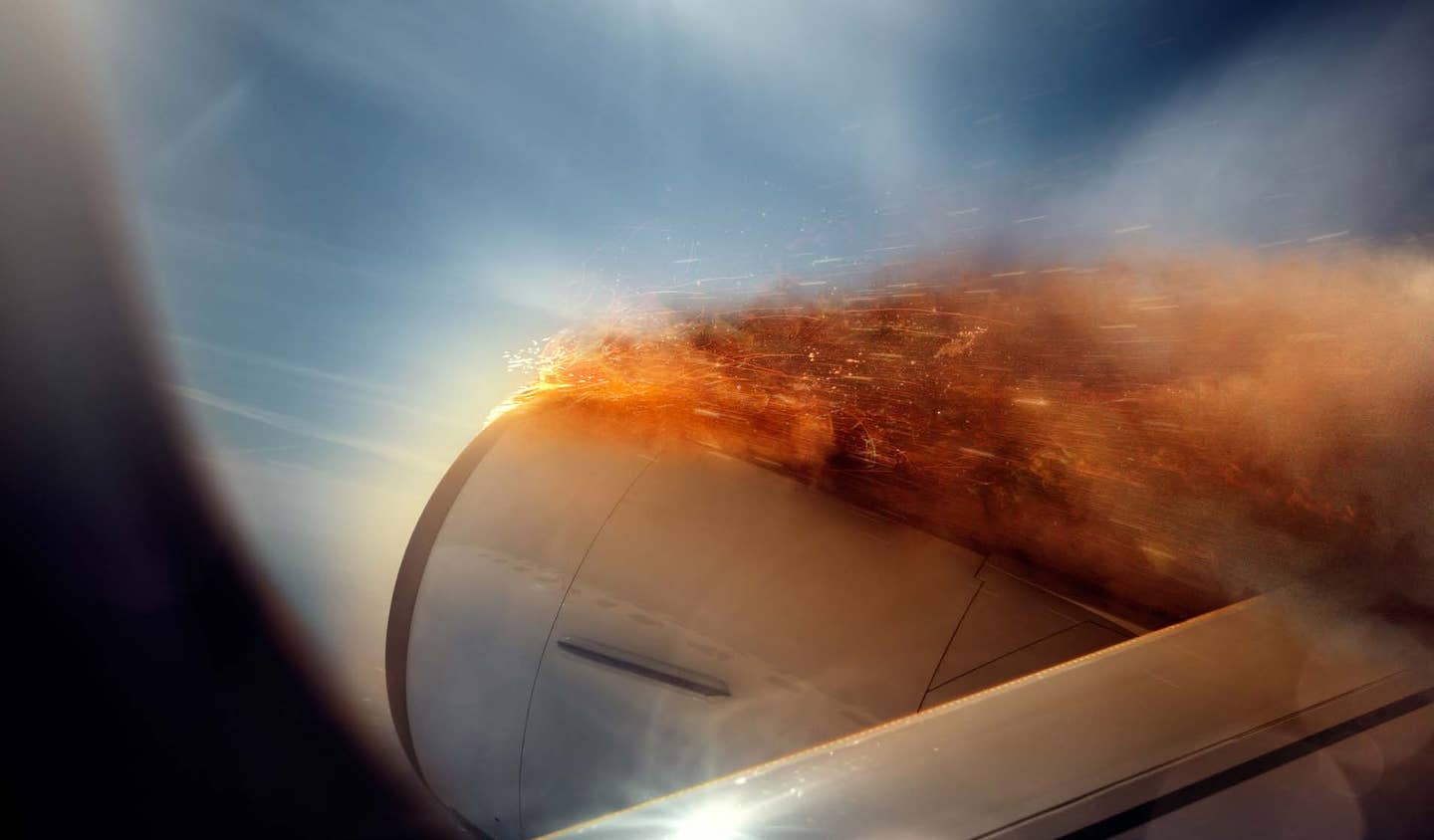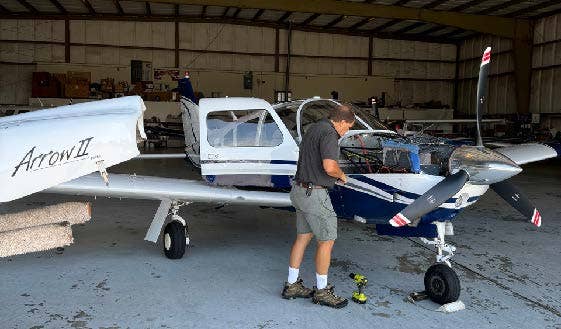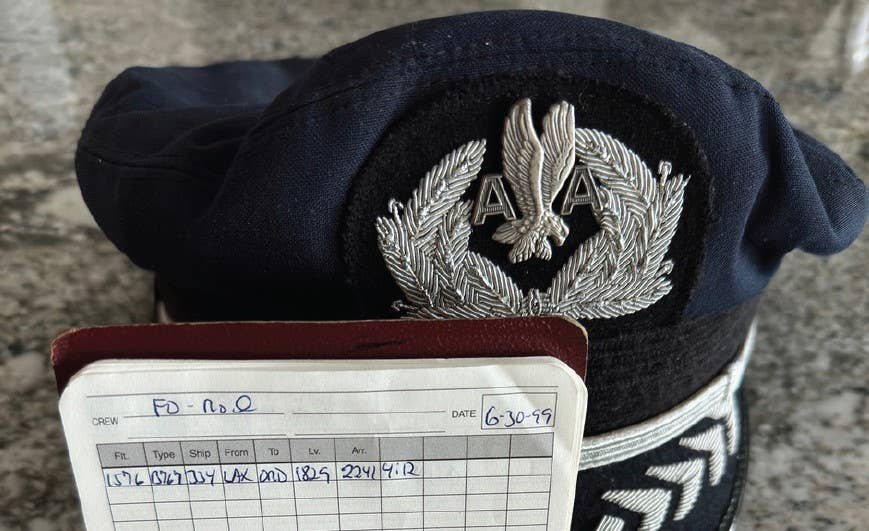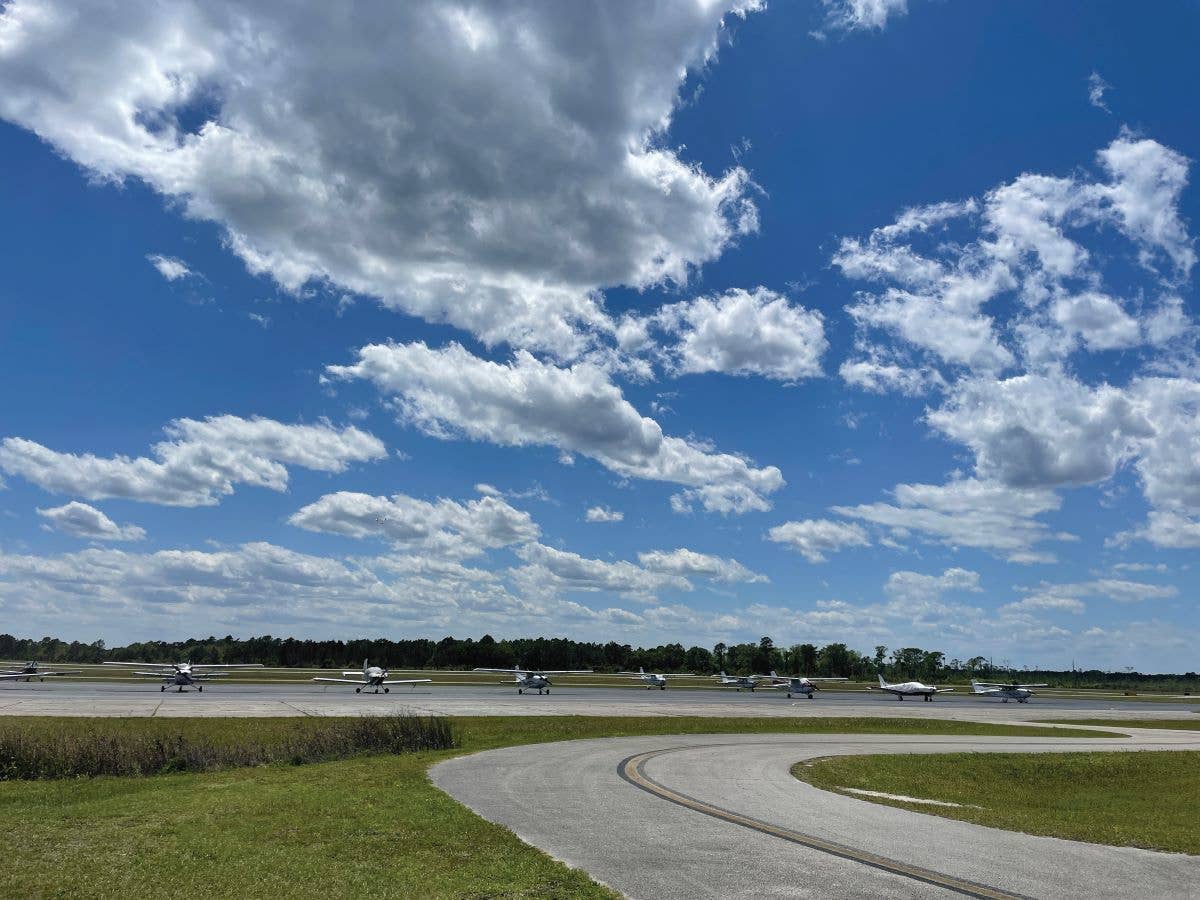
The airport at Flagler Beach, Florida, on a better day for flying. [Credit: Julie Boatman]
With the light quickly fading on the eve of the winter solstice, I increased my pace of applying liquid wax to the last few sections underneath the right wing. The creeper wheels clacked over the concrete floor. As I wiped the microfiber cloth across the aluminum surface, an unfamiliar pickup truck slowly rolled into view and parked next to the row of T-hangars opposite me.
The truck movement seemed hesitant, and the driver remained in the cab. A gate card is required for entrance, so I wasn’t overly concerned about security issues. That said, I thought it best to make a friendly inquiry. The driver, a young man in his early 30s, was picking up his uncle, who had just purchased a Mooney Ovation (M20R) and was en route from Houston. Having met the uncle months back, I recalled a shiny Beech Baron in his hangar. “Quite the transition,” I thought to myself.
If you're not already a subscriber, what are you waiting for? Subscribe today to get the issue as soon as it is released in either Print or Digital formats.
Subscribe NowAs was typical for the time of year at my Florida airport, the weather was deteriorating in a blanket of fog. The METAR, which was almost an hour old, reported 400 feet and three miles of visibility. It appeared worse. From home, the young man’s wife had been tracking the uncle’s route via FlightAware. I did the same after the wife had a concern about the airplane flying a “circle over the airport.”
My first reaction was reassurance that this was part of the approach procedure. Later, after a conversation with the uncle and studying the track data, I found that my theory was correct. As I continued a friendly discussion with the nephew, out of the gray darkness over the tree line, a set of bright lights pierced the gloom. The Mooney was nearing the runway threshold. Relief spread across the nephew’s face.
While the airplane taxied in toward our position at theT-hangars, I silently ruminated about the scenario: The purchase of an airplane with an unfamiliar maintenance history. Transition to a single-engine airplane with totally different flight characteristics and procedures. Avionics and navigation systems that require a new comfort level of operational understanding. A four-and-a-half-hour duration flight into night conditions and a low IFR forecast. It was a recipe for disaster.
To my surprise, the Mooney missed the entrance to our T-hangar row despite the intensity of LED landing lights illuminating almost everything in its path. The airplane immediately reversed course, and with a slightly uncomfortable amount of speed, arrived in front of the hangar door. Knowing that fatigue was probably a factor for the missed turn, I waited a few moments after the uncle opened the cockpit door before offering a greeting.
I chided, “It sure doesn’t look like a Baron. Long trip, I imagine?”
The uncle smirked. He paused before sliding out of his seat, saying, “Yeah...long trip. I haven’t flown at night in six years, and I haven’t flown in IFR conditions for six years.”
That statement was packed with a lot of information, most of it disturbing. He was blatantly admitting non-currency. As our conversation continued, the uncle also claimed that on the first approach attempt, the autopilot malfunctioned, but fixed itself on the second attempt. Wouldn’t reversion to a manual operation have solved the problem?
Additionally, ATC had intended vectors for an approach that landed to the west because of the prevailing winds. Despite a 10-knot tailwind, the uncle requested and received approach clearance that landed to the northeast, knowing that the LPV procedure on that runway provided for lower minimums.
Unfortunately, one important caveat was overlooked. A NOTAM issued almost one year ago made the LPV and LNAV/VNAV decision altitudes for the approach “not authorized.” The remaining procedure was only the LNAV approach for that runway. But those minimums were at the same 400-foot altitude as the last reported ceiling. Yikes.
As a knot tightened in my stomach, I assisted with opening the hangar doors and with pushing the airplane into its new home. I learned that the transition from Baron to Mooney was to exploit current market values while trading in a little less airspeed for a lot less fuel burn. The uncle exclaimed, “I always look for an excuse to buy a new toy.” New toy? Taken in another context the statement would have seemed benign, but in this instance, the remark highlighted a dangerous attitude. My knot tightened further.
Still disturbed by the demonstration of potentially dangerous aeronautical decision making, I investigated the event further. Using the combination of archived ATC Live recordings and FlightAware data for my research, the Mooney had begun one turn in the holding pattern as per a request for the course reversal even though it wasn’t required. According to the data, it didn’t appear that the course-reversal holding pattern was necessary, as the airplane altitude was appropriate for beginning the approach without requiring a high rate of descent.
Once inbound past the IAF (initial approach fix), the course headings appeared erratic, which explained themal functioning autopilot that was reported to ATC after declaring a missed approach. ATC vectored the Mooney in an irregular oval pattern to rejoin the final approach course approximately four miles from the FAF (final approach fix). Just prior to the FAF, the controller transmitted that the airplane appeared to be “left of course,” which would have placed the altitude at around 1,000 feet. The data indicated a correction was made. Despite the not-so-stable approach, the outcome was successful.
A rough calculation of fuel burn for the 1999 Mooney Ovation indicated that upon landing, he had approximately an hour and 30 minutes of fuel remaining, which would have put him very close to minimum IFR fuel requirements. Considering the fog conditions prevailing in central Florida at the time, a more distant alternate may have been necessary, so his options would have been limited.
Although anecdotal, a reliable source indicated that this type of behavior from the uncle was not a surprise. Years prior, an unrelated incident reflected an arrogant and cavalier attitude toward breaking the rules regardless of the potential consequences.
Driving home after the encounter, I felt conflicted. As a former check airman at the airline, it was my responsibility to ensure safety standards were upheld. Poor performance or poor judgment was corrected with additional training. Although not active, I am a current flight instructor as well. Did I shirk my duties by not verbalizing my concerns?
Unfortunately, it becomes a philosophical fine line. The potential for creating resentment by challenging a pilot’s mindset may have the opposite effect, even though the intention is to have that individual reflect on their decisions and how they might put their lives and the lives of others in jeopardy. As a check airman, such discussions were part of my job description. Fortunately, I only had to conduct that conversation once. Despite additional training, the pilot was forced to retire early. I still feel responsible for ending his career.
In any case, the decisions made by the new Mooney pilot comprised a recipe for disaster. Because the outcome was successful, I hope it doesn’t embolden him to challenge the surly bonds again in a similar fashion
This article was originally published in the March 2023 Issue 935 of FLYING.

Sign-up for newsletters & special offers!
Get the latest FLYING stories & special offers delivered directly to your inbox


